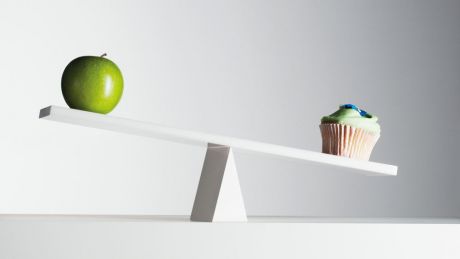The Fat-Loss Diet Rules Ultimate Performance PTs Teach
Follow the simple nutrition tips that world-leading PT company Ultimate Performance gives its clients to start stripping body fat fast

“There’s a very clear trifecta to losing fat mass and gaining muscle mass for body composition success,” says Ultimate Performance founder Nick Mitchell. “One, the right exercise regime; two, optimal stress management; and three, the correct diet. Far and away the most challenging of these factors to get right is the correct diet and yet, perversely, it is also the simplest to establish. A smart exercise regime takes into account everything from biomechanics to structural balance, and needs to be intelligently planned in order to maintain ongoing positive adaptations (in other words, progress), while stress management is a veritable minefield of sleep protocols, mental health management and digestive issues – but the actual diet that is optimal for most of us is really rather simple.”
Get lean with ease
“If we aim to ‘eat from the land’ by avoiding Frankenstein foods and sticking to nutrition that we can kill, pick or pluck, all while eating fewer calories than we expend, then most of us can get as lean as we want to be,” Mitchell says. “Combine that with the right amount of resistance training and some amazingly positive outcomes can be achieved in a startlingly short time.” Here are the five key principles UP instils in its clients for them to follow when undergoing a body transformation challenge. Adhere to them too, and you’ll start torching fat.
1. Fat-loss foods don’t exist…
There is no such thing as a “fat-loss food”. While it is true that standard servings of some foods contain very few calories, the idea of a negative-calorie food is a myth. For this to be the case, the thermic effect of food (TEF) would have to be more than 100%, meaning that the calorie cost of digesting the food would be greater than its actual energy content. Protein has the highest TEF of all nutrients at 20-30%, which still leaves at least 70% of the calories for your body to use or store. All foods add at least some calories to your calorie balance – no foods subtract them. Overeating any type of food, even those labelled as “healthy”, will lead to weight gain.
2. … and neither do fattening foods
Part of developing a healthy relationship with food is understanding that no food is naturally “bad” for you. In terms of weight loss a calorie is a calorie, and if you are in a state of negative calorie balance you can technically eat anything you want and still lose weight. But if you are interested in losing body fat and building muscle, then you should not interpret this as being a licence to eat whatever you want.
3. Be smart with food selection
Obviously some foods are better for your fat-loss efforts, and your health, than others. These foods always are one or more of the following: they contain few calories per gram; they are solid in composition, rather than liquid; they are high in fibre; and they are high in protein. The majority of these will be whole and minimally processed foods (as close to their natural form as possible) such as fresh fruit, vegetables and meat. These types of food are also typically nutrient-dense and provide several micronutrients that have positive health effects.
See related
- A Healthy Eating Plan For When You’re Hitting The Gym Hard
- A Fat-Loss Meal Plan That Doesn’t Sacrifice Flavour
- Lose Weight With This Four-Week Meal Plan For Men
4. Choose nutrient-dense foods
At Ultimate Performance we typically recommend limiting consumption of calorie-dense foods, which are those that contain a high number of calories per unit of volume. The problem with calorie-dense foods is that while eating a large proportion of your calories in one sitting may taste great in the moment, it can cause big fluctuations in your energy levels and leave you feeling hungry later in the day. As you probably know, you could very easily eat 500 calories’ worth of pizza and be hungry soon after. In contrast, a calorie-equated serving of lean protein and vegetables would keep you full for hours.
5. Know your food triggers
While we would never recommend completely removing a specific food from your diet (unless medically advised to do so), limiting your intake of certain foods can make it easier to stick to your meal plan. These foods are basically the opposite of those mentioned before. Examples include obvious things like alcohol, fizzy drinks, sweets and fast foods, but you also must be careful with certain “healthy” foods such as nuts and oils (fat loss does not necessarily follow healthy eating, and vice versa). Everybody also has their own personal “trigger foods” that they struggle to eat only in moderation.
Get the Coach Newsletter
Sign up for workout ideas, training advice, reviews of the latest gear and more.
Coach is a health and fitness title. This byline is used for posting sponsored content, book extracts and the like. It is also used as a placeholder for articles published a long time ago when the original author is unclear. You can find out more about this publication and find the contact details of the editorial team on the About Us page.

